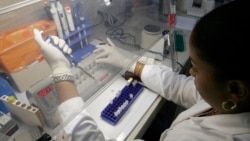Ten years ago, then-President George W. Bush established the President’s Emergency Plan For AIDS Relief, universally known as PEPFAR. The idea was to fight the HIV/AIDS epidemic in the hardest-hit regions of the developing world, particularly in sub-Saharan Africa. The program’s goal for the initial five years was to support treatment for 2 million people, prevent 7 million new infections, and care for 10 million people infected or affected by HIV/AIDS.
Clearly the bar for success had been set very high. It is true that ten years ago, life-saving antiretroviral therapy was available in most countries in the developed world, but the medication was not widely available in the developing world. Only about 50,000 people living with HIV in all of Sub-Saharan Africa were receiving antiretroviral treatment. Ten years ago, a diagnosis of HIV/AIDS in the developing world was a virtual death sentence.
Under PEPFAR, that changed. As a result, over the past decade, life expectancy rates for most patients in the developing world, particularly in Africa, have begun to inch upward. Today, transmission of the infection from mother to infant is preventable, and deaths from AIDS have declined by more than one quarter since their peak in 2005. New HIV infections have declined by nearly 20 percent, particularly among children.
According to the Institute of Medicine of the National Academies, as of the end of September 2012, PEPFAR was directly supporting 5.1 million people on life-saving antiretroviral therapy.
All in all, PEPFAR has been a great success, the largest and most successful foreign health assistance program in history. Indeed, where ten years ago, the medical community’s main concern was to slow down the spread of the epidemic, while its end was only a distant dream; today, hopeful voices speak of an AIDS-free generation. One decade and tens of billions of dollars later, this goal is nearly within reach, thanks in large part to the foresight of former President Bush, the leadership of President Obama, the generosity of the American people, and the President’s Emergency Plan for AIDS Relief.
If it is true that good health is life’s greatest blessing, then to millions of people around the world, PEPFAR was the best gift of all.
Clearly the bar for success had been set very high. It is true that ten years ago, life-saving antiretroviral therapy was available in most countries in the developed world, but the medication was not widely available in the developing world. Only about 50,000 people living with HIV in all of Sub-Saharan Africa were receiving antiretroviral treatment. Ten years ago, a diagnosis of HIV/AIDS in the developing world was a virtual death sentence.
Under PEPFAR, that changed. As a result, over the past decade, life expectancy rates for most patients in the developing world, particularly in Africa, have begun to inch upward. Today, transmission of the infection from mother to infant is preventable, and deaths from AIDS have declined by more than one quarter since their peak in 2005. New HIV infections have declined by nearly 20 percent, particularly among children.
According to the Institute of Medicine of the National Academies, as of the end of September 2012, PEPFAR was directly supporting 5.1 million people on life-saving antiretroviral therapy.
All in all, PEPFAR has been a great success, the largest and most successful foreign health assistance program in history. Indeed, where ten years ago, the medical community’s main concern was to slow down the spread of the epidemic, while its end was only a distant dream; today, hopeful voices speak of an AIDS-free generation. One decade and tens of billions of dollars later, this goal is nearly within reach, thanks in large part to the foresight of former President Bush, the leadership of President Obama, the generosity of the American people, and the President’s Emergency Plan for AIDS Relief.
If it is true that good health is life’s greatest blessing, then to millions of people around the world, PEPFAR was the best gift of all.


















